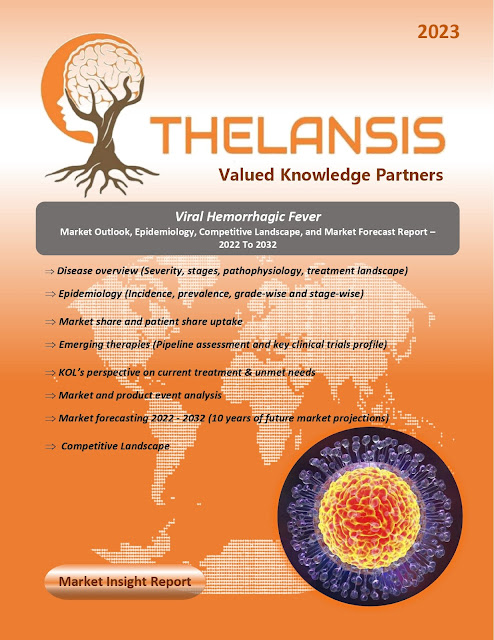Viral Hemorrhagic Fever – Market Outlook, Epidemiology, Competitive Landscape, and Market Forecast Report – 2022 To 2032
Yellow fever is an acute viral hemorrhagic disease caused by the flavivirus, closely related to the viruses that cause West Nile, St. Louis, and Japanese encephalitis. Tree-hole breeding mosquitoes, such as Aedes aegypti and Haemagogous species, primarily transmit it. The transmission of the virus occurs in three distinct cycles: jungle, intermediate, and urban. The incubation period is typically 3 to 6 days, and once contracted, the virus quickly spreads to multiple organs in the body, with the liver and kidneys being the most affected. Symptoms include jaundice, acute renal failure, black vomit, cerebral edema, and encephalopathy. There is no specific treatment for yellow fever, but severe cases require aggressive supportive care and hydration. The differential diagnosis for yellow fever includes a variety of other infectious diseases, such as viral hemorrhagic fevers, viral hepatitis, and malaria. Most cases of yellow fever are subclinical or mildly symptomatic, with an excellent prognosis, but the severe disease can occur in 15% of symptomatic patients, with a death rate of 30-50%.
·
Yellow fever is endemic to the Americas, where
an estimated 5,000-200,000 clinical cases occur annually.
Thelansis’s “Viral Hemorrhagic Fever
Market Outlook, Epidemiology, Competitive Landscape, and Market Forecast Report
– 2021 To 2032" covers disease overview, epidemiology, drug utilization,
prescription share analysis, competitive landscape, clinical practice,
regulatory landscape, patient share, market uptake, market forecast, and key
market insights under the potential Viral Hemorrhagic Fever treatment
modalities options for eight major markets (USA, Germany, France, Italy, Spain,
UK, Japan, and China).
KOLs insights
of Viral Hemorrhagic Fever across 8 MM market from the centre of Excellence/
Public/ Private hospitals participated in the study. Insights around current
treatment landscape, epidemiology, clinical characteristics, future treatment
paradigm, and Unmet needs.
Viral Hemorrhagic Fever Market Forecast Patient
Based Forecast Model (MS. Excel Based Automated Dashboard), which Data Inputs
with sourcing, Market Event, and Product Event, Country specific Forecast
Model, Market uptake and patient share uptake, Attribute Analysis, Analog
Analysis, Disease burden, and pricing scenario, Summary, and Insights.
Thelansis Competitive Intelligence (CI) practice
has been established based on a deep understanding of the pharma/biotech
business environment to provide an optimized support system to all levels of
the decision-making process. It enables business leaders in forward-thinking
and proactive decision-making. Thelansis supports scientific and commercial
teams in seamless CI support by creating an AI/ ML-based technology-driven
platform that manages the data flow from primary and secondary sources.




Comments
Post a Comment